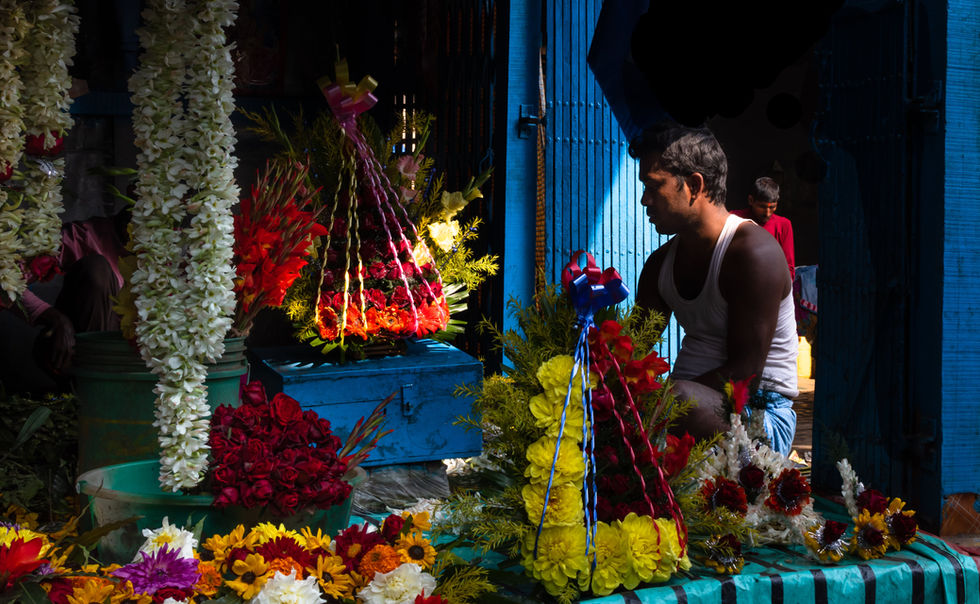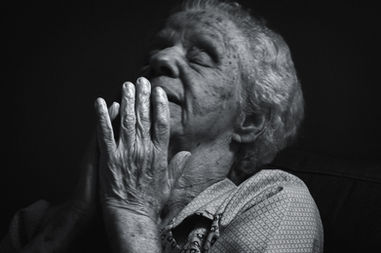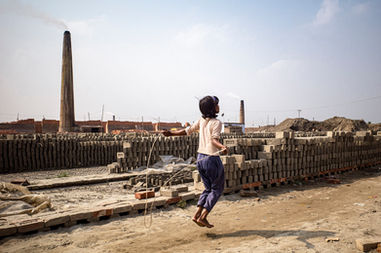
THE HOLY RIVER
LIFE ALONG THE RIVER GANGES
July 17, 2020
PICTORIAL STORY
Photography and words by Pradip K. Mazumder
Introduction by Karin Svadlenak Gomez
Pradip K. Mazumder is an American photographer of Indian origin, based in Northern Virginia, USA. He has documented life along the Hooghly River, in local tongues the 'Ganga', a tributary of the river Ganges and part of the Ganges Delta, in the city of Kolkata, one of the largest metropolitan areas of India and where he was born and raised. Pradip's vibrant colour photographs provide a glimpse into a world where the Ganges plays a central role. He specifically wanted to highlight the richness in the diversity and character of the people in Kolkata, whose lifestyle is very much intertwined with that of the river.
-min.jpg)
What starts as a trickling source of frigid ice-cold waters of the Gangotri glacier, a Hindu pilgrimage site at about 13,000+ feet in the Himalayas in the state of Uttarakhand, India, becomes the primary source of water for one of the major rivers of the world – the Ganges. From the snout of the Gangotri Glacier, springs the source of the Bhagirathi River, one of the primary tributaries of the Ganges River. The mighty Ganges is fed by multiple small streams on its journey towards its delta, a long run that takes it South and East through the Gangetic Plain of India and Bangladesh. After a journey of about 2600 km, the Ganges finally meets the Bay of Bengal, some 100 km south of Kolkata.
The Ganges is a source of sustenance to millions of people, whose lifestyle, culture, religion, and habits have been shaped by the river for generations. Some of the biggest fairs in India, which attract millions of pilgrims and visitors, are located along the banks of the Ganges. One of the branches that the Ganges splits into downstream is the river Hooghly (also known as Bhagirathi or, locally, Ganga), which flows past Kolkata, today one of India's most populous cities. The wider metropolitan area has a population of about 14.8 million. It is here that I have photographed life along the river.
THE CITY OF JOY
The year was 1690. In the afternoon of a late August day, a boat belonging to Job Charnock, an agent of the British East India Company, drifting on the Hooghly River, had to make an emergency stop at the banks of the river due to heavy rain. The place, ruled by the Emperor of Bengal under Mughal dominion, consisted of three villages – Sutanuti, Gobindapur, and Kalikata. After the Nawab granted the East India Company a trading license, the area was developed by the Company into an increasingly fortified trading post. Thus, Kolkata was born. It served as the capital of British-held territories in India until 1911, when the capital was moved to New Delhi due to the growing nationalism movement in Bengal.
Kolkata (previously Calcutta, the official name until 2001), nicknamed the “City of Joy” is regarded as the cultural capital of India. It played a crucial role in the Indian independence movement and remains a hotbed of contemporary state and national politics. Following India’s Independence from Britain in 1947, Kolkata evolved into a center for modern Indian education, culture, science, politics, and sports.
LIFE ALONG THE RIVER
The most notable and historic landmark across the river Ganges is the ‘Howrah Bridge.’ When commissioned in 1943, it was the third longest suspension cantilever bridge in the world, connecting Kolkata with the city of Howrah, a major railway hub and industrial center.
On average, it carries approximately 100,000 vehicles and 150,000 pedestrians daily. The bridge has been renamed Rabindra Setu after the great Bengali poet Rabindranath Tagore, who was the first Indian and Asian Nobel laureate. A second bridge, called Vidyasagar Setu, the longest cable-stayed bridge in India, was completed in 1992 to ease the pressure on Howrah Bridge.
Life around the river Ganges starts early in the morning with the bathers and people offering prayers. In the Hindu religion, the river Ganges is considered sacred and is personified as the goddess Ganga. She is worshipped by Hindus and Buddhists who believe that bathing in the river causes the remission of sins and facilitates 'Moksha' (liberation from the cycle of life and death). There are several temples and places of worship by the banks of the river.
It is also a place for business and people’s livelihoods. Located adjacent to the Howrah Bridge, the Mullik Ghat flower market is the largest such market not only in India but in all of Asia, with over 4,000 vendors selling everything from roses, marigold, jasmine, rajanigandha (tuberose), imported lilies, to a host of other flowers. The place is a visual treat to watch, particularly for street and travel photographers.
Kolkata is vibrant throughout the year, but more so during the weeklong, Durga Puja Festival, in October. During this time boats laden with piles of straw arrive in Kolkata. This straw is used to build the framework of large idols of the Goddess Durga, which are made out of wood, straw, and clay. Some are as high as 15-20 meters (50-60 feet).
The festival ends with much fanfare when the huge idols of the Goddess Durga, along with her four children, are immersed in the river Ganges.

All this activity along the river is not without its problems. The Ganges is threatened by severe pollution and riverbank erosion due to the cutting of trees. The rich river ecosystem that sustains human life and wildlife is threatened, and the Government’s effort to clean the waters of Ganges has so far proven inadequate. This is an issue that needs the active support of religious groups, local authorities, and common citizens, as well as global awareness and support. Without this, India’s holiest river - and the livelihoods it supports - are likely to suffer irreparable damages.

The views, thoughts, and opinions expressed in the text belong solely to the author, and are not necessarily shared by The Pictorial List and the team.




































